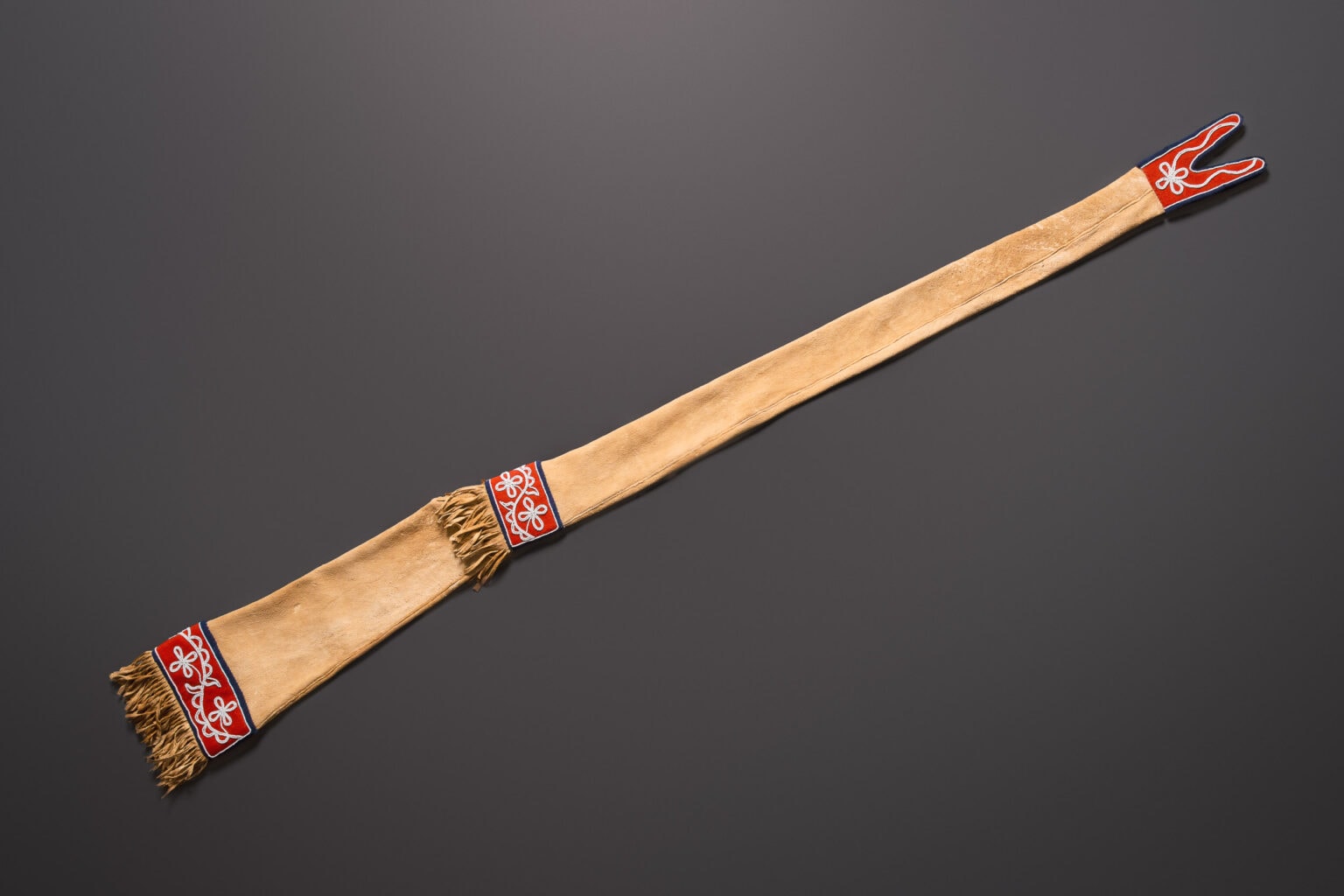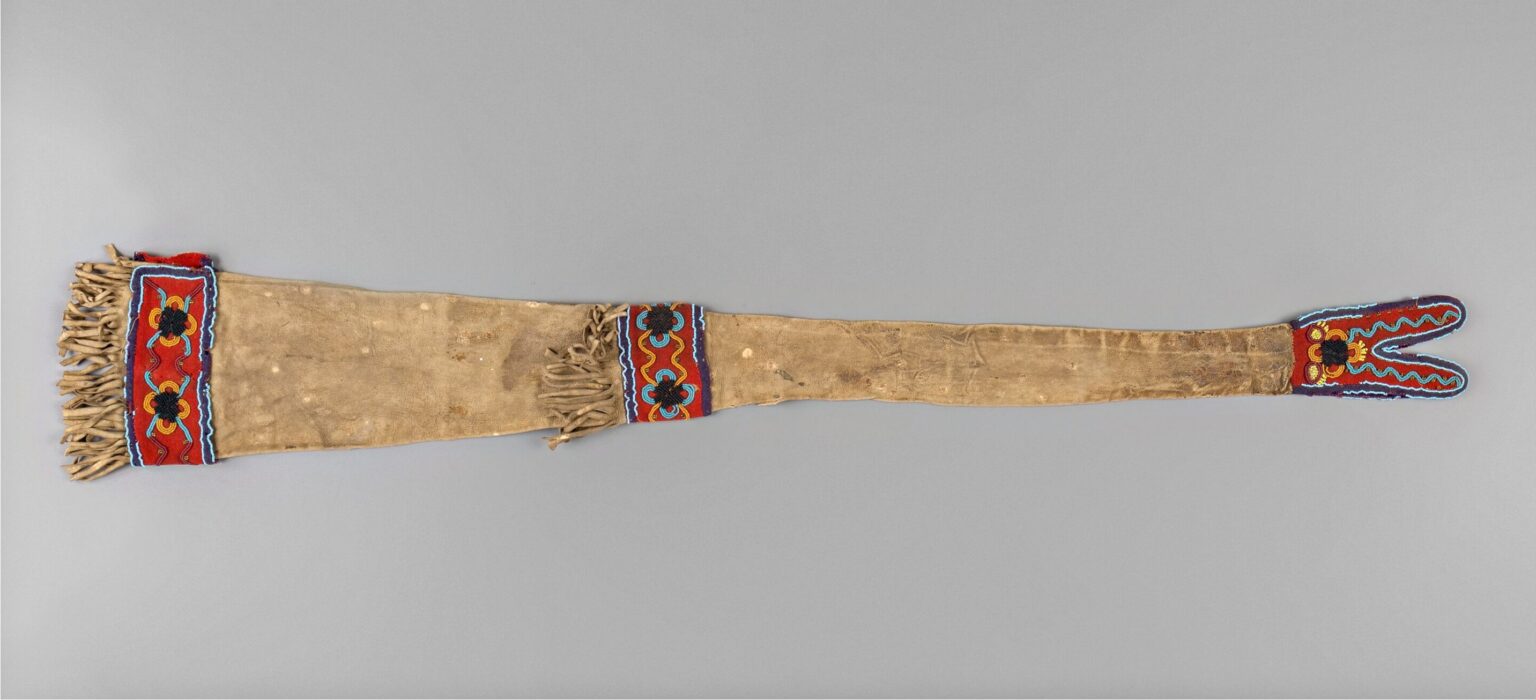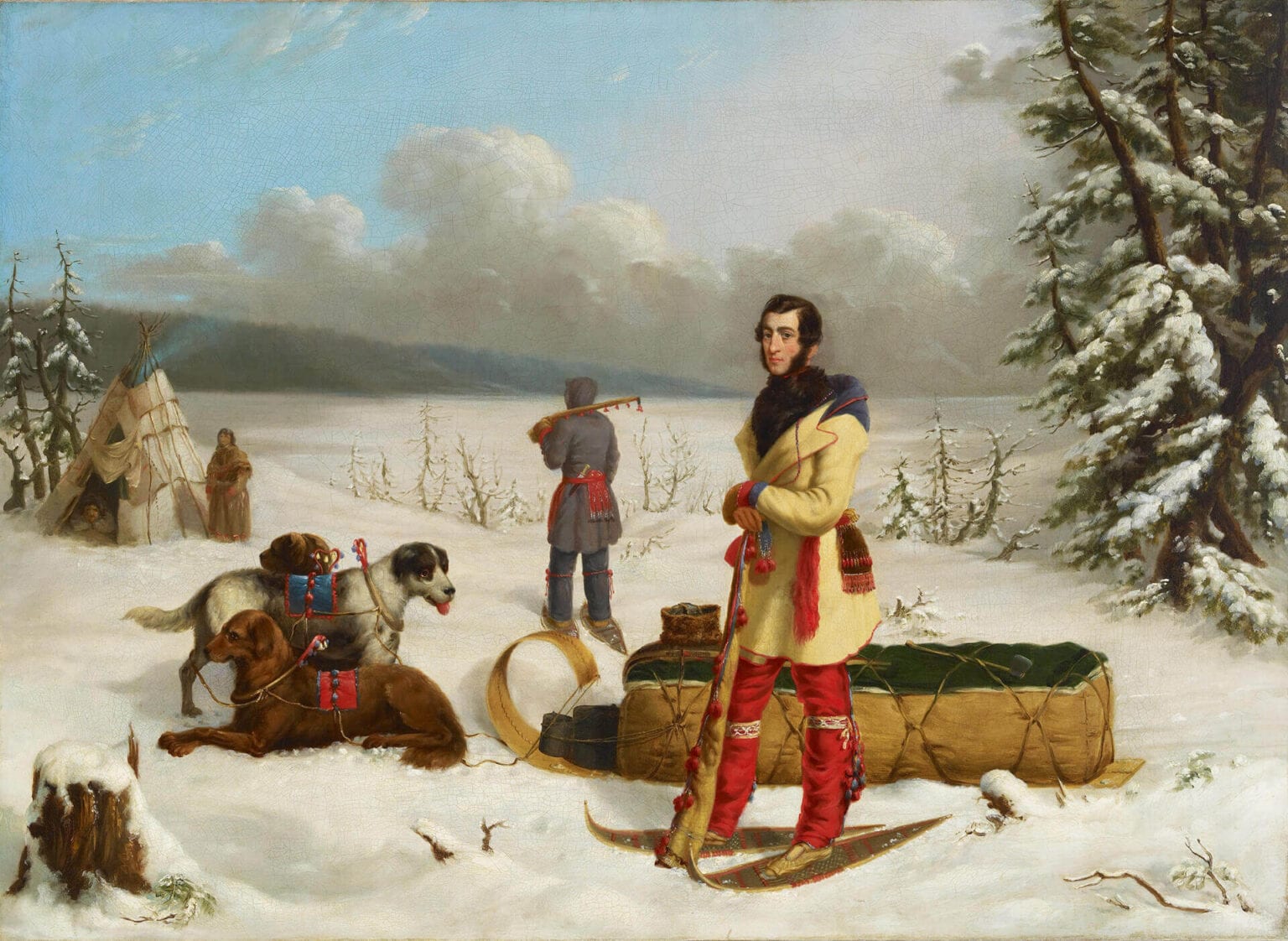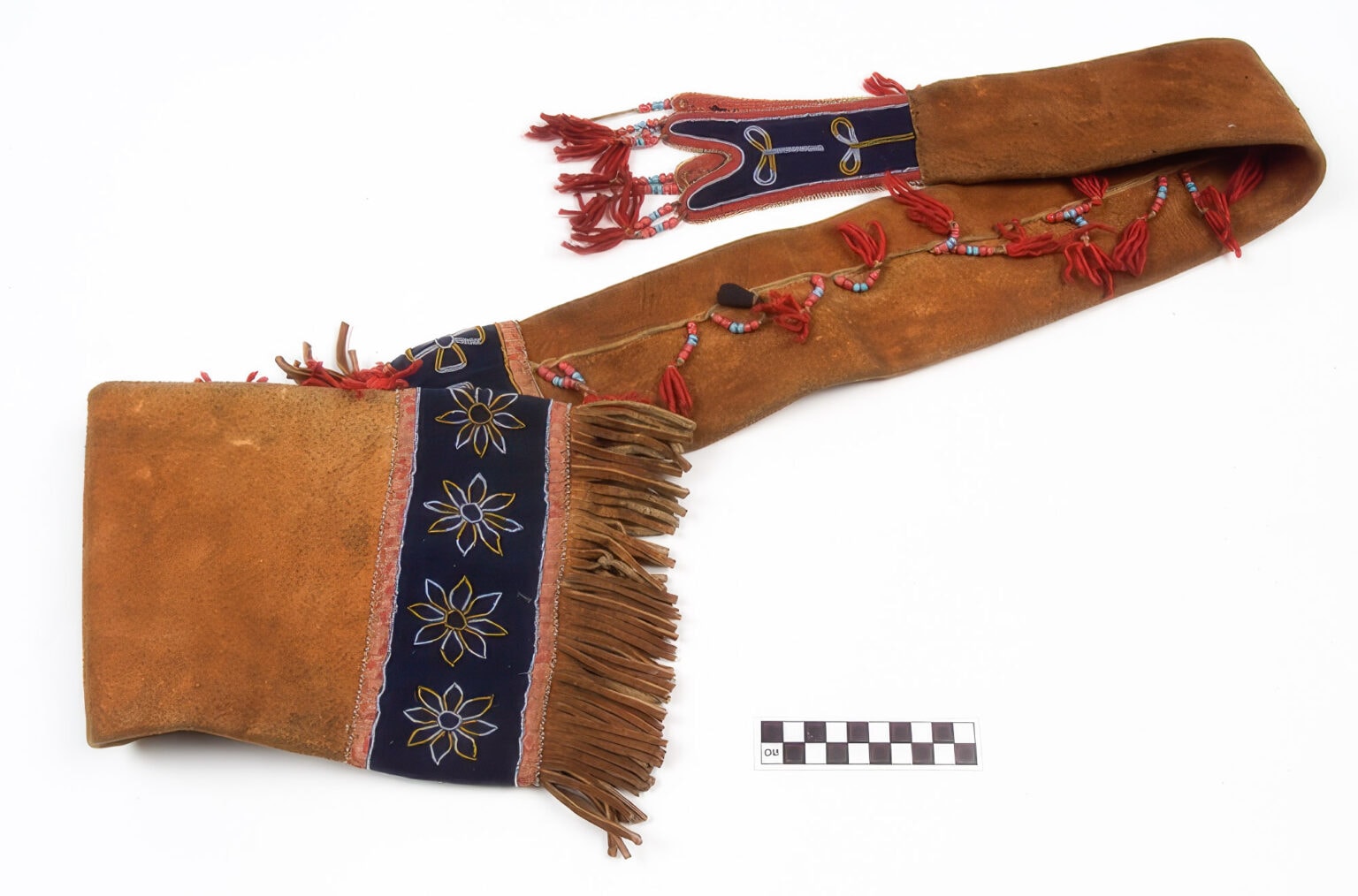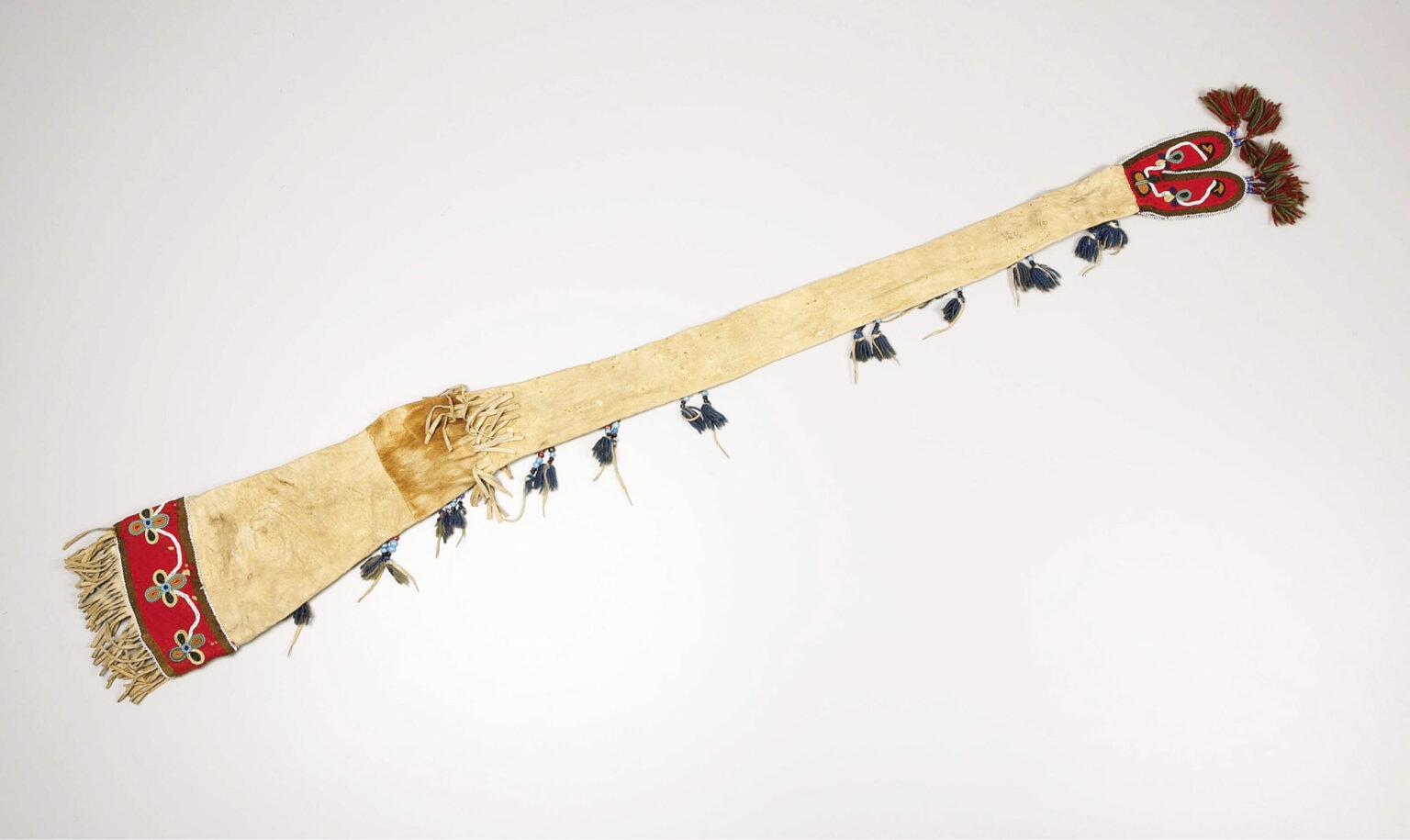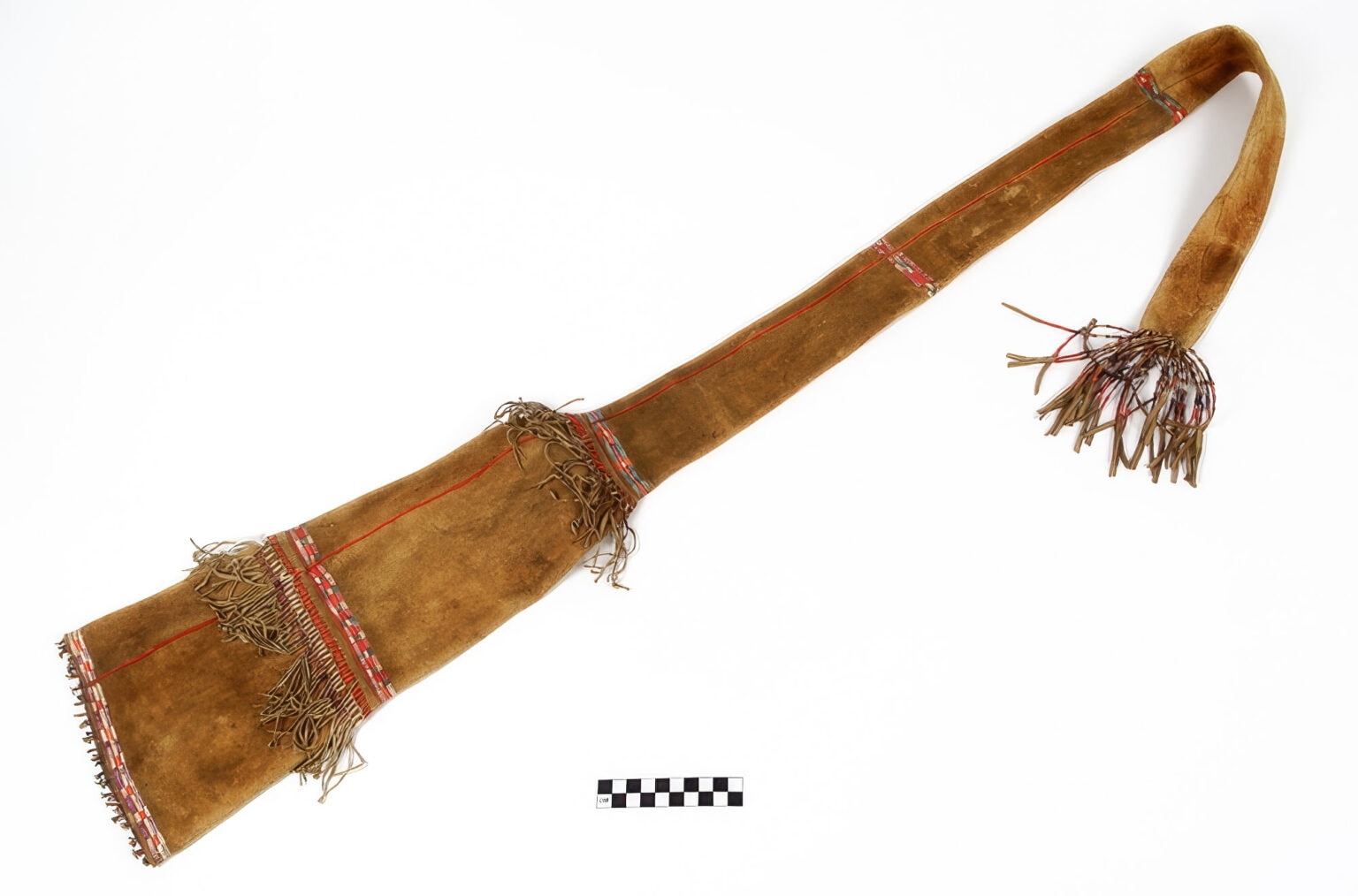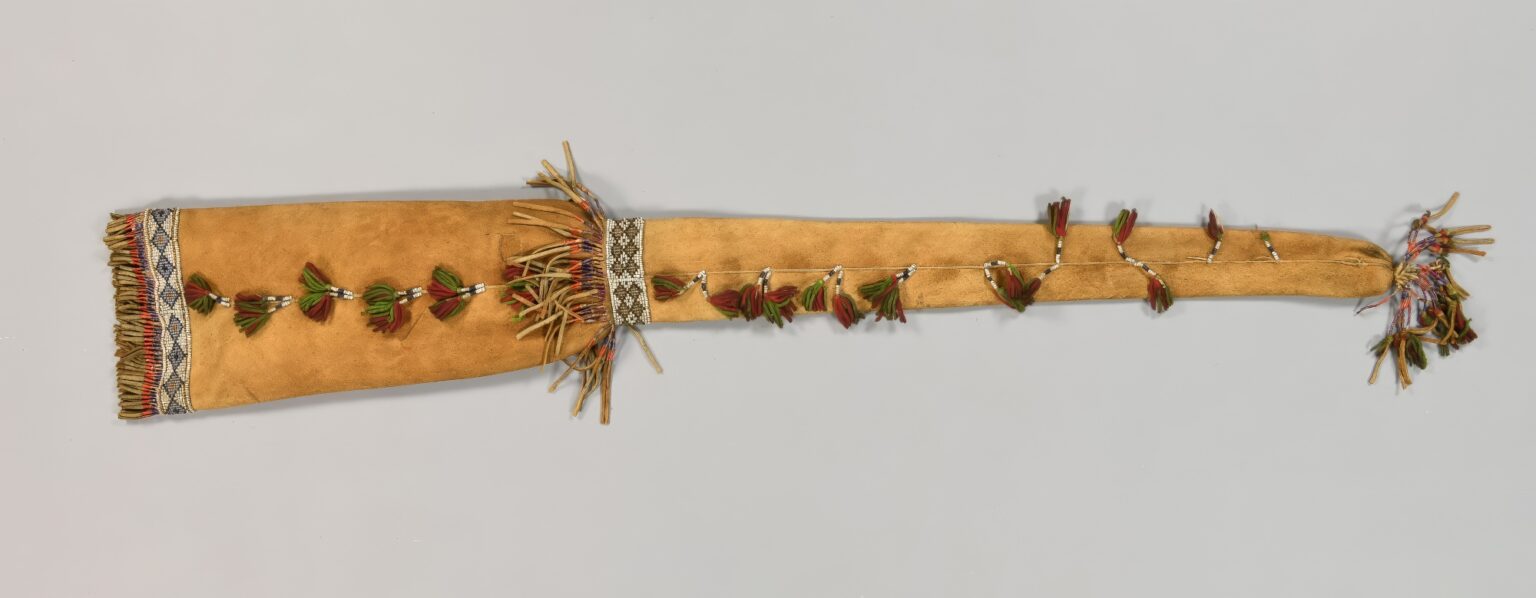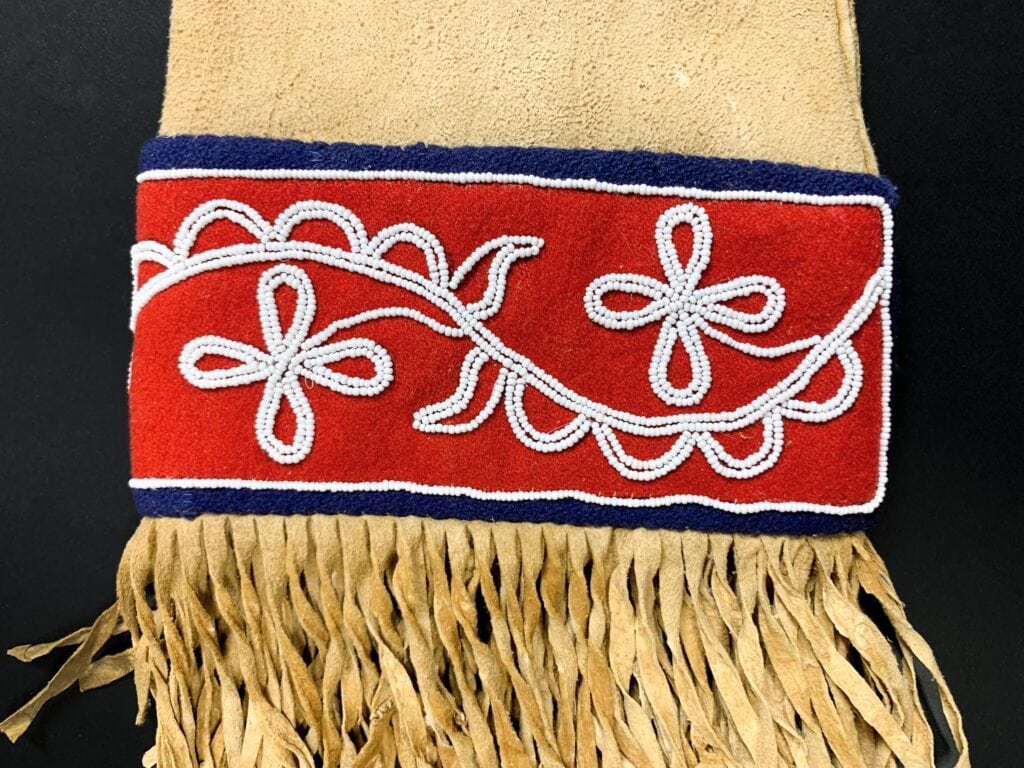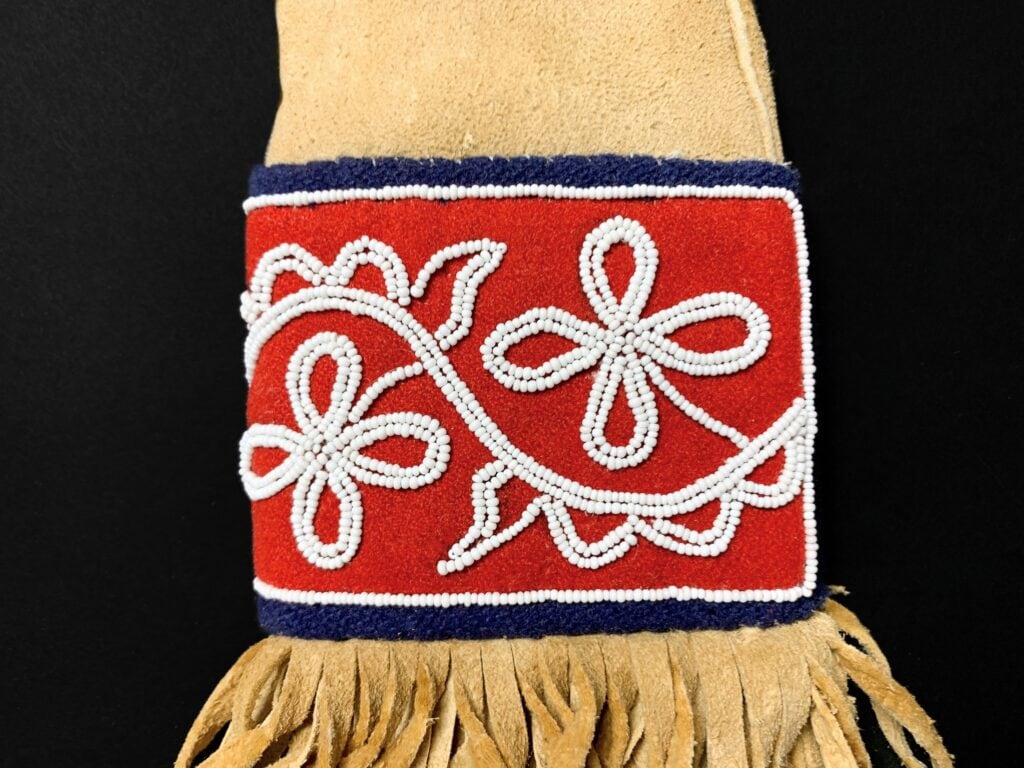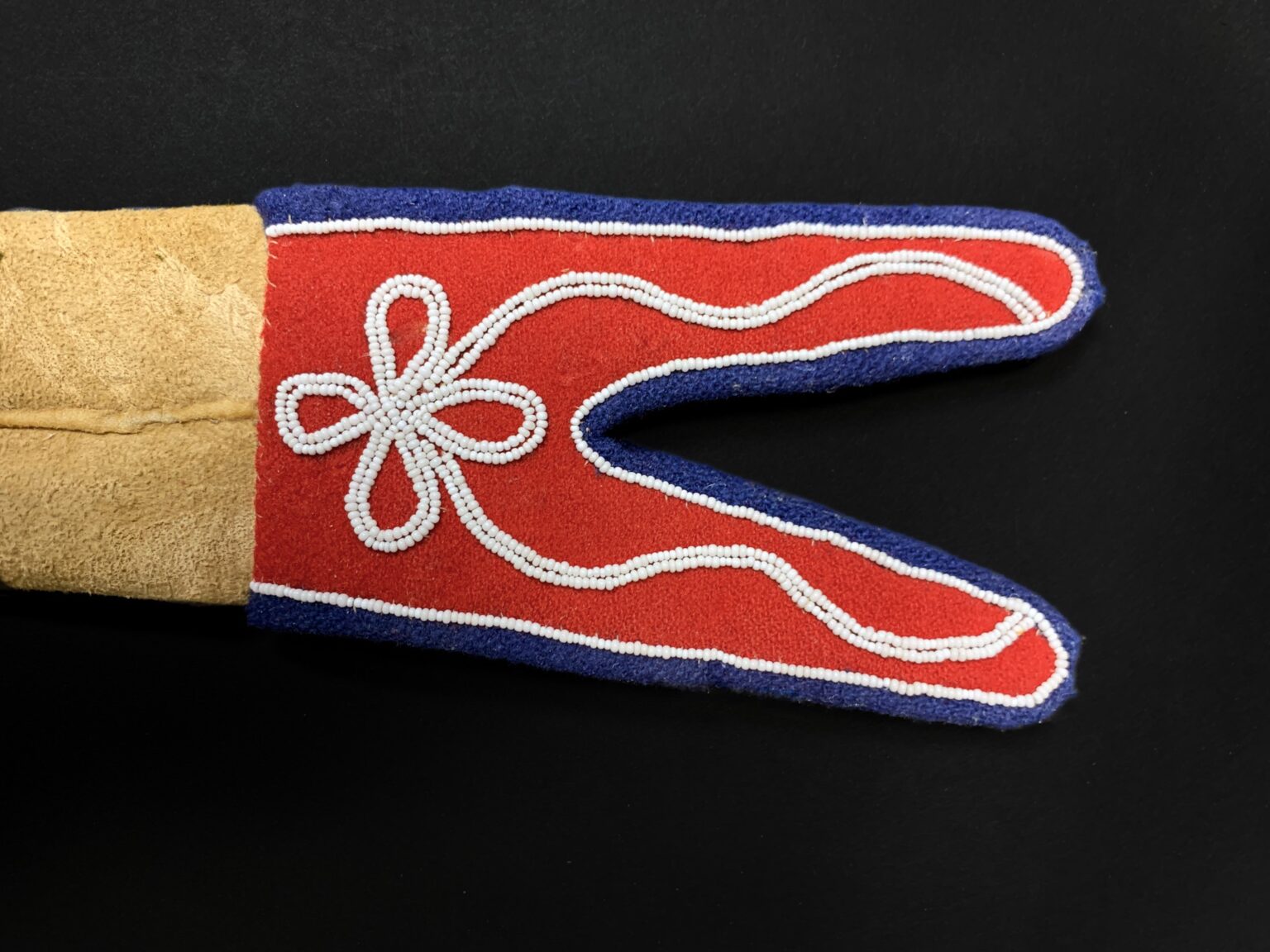Choice of material
The option number one is buckskin, because I’m a stickler for the principle that buckskin is always superior to cloth. I was wondering whether plain or decorated and my natural decorativeness won out over practicality. Now the question was, how to make it stylish and historically correct?
What kind of case? Athabasca!
I don’t know of any surviving mountainmen rifle cases. That left the option of making an Indian gun case. I checked my database of gun cases, and it was clear. An Athabascan-style Indian gun case was the perfect choice. It’s simple, has precise architecture, can be decorated easily and effectively, is pretty, practical, stylish, and doesn’t have the unnecessary massive fringing like Crow or other tribes’ gun cases, which is impractical and “eats up” a lot of material.
Quite a few Athabaskan rifle cases have survived, although most of them date back to the late 19th century. I did, however, find one painting by Paul Kane from 1845/46 that shows John Henry Lefroy, scientist and director of the Toronto Magnetic and Meteorological Observatory, wintering at Lake Athabasca during his expedition in search of magnetic north in the winter of 1843/4. In the painting, Lefroy is leaning on his rifle, which is resting in an Athabascan-style buckskin gun case. His companion, Corporal Henry, turning his back to us and wearing a grey capote is carrying a gun case of the same style.
It can be inferred that the Athabascan style gun case could be older, as it is already clearly developed in the painting. While the territory of the Athabascan-speaking tribes is in Canada, specifically Alberta, which is further north than where the mountainmen operated, the distance is relatively small and the possibility that the case reached Montana, Idaho, Oregon, or Wyoming through trade or personal interactions is significant.
Pattern
The pattern of the case is quite simple and straightforward, consisting of one or two pieces. The front piece, where the barrel is, is slightly conical, and the case is flared at the trigger guard, the case is widened, sometimes on one side, sometimes on both sides. There are apparently several types of patterns, see attached images.
Decoration
The decoration is usually very simple and consists of two or three narrow “cuffs” made of buckskin or woollen cloth covered with a fabric of contrasting colour. The cuffs are usually decorated with a floral beadwork. One cuff is then sewn into the point where the case widens and the other is attached to the end of the case where the stock is. Cuffs are sometimes adorned with short fringes. There are also case variants decorated with quillwork.
Another decoration is the front hang at the barrel mouth, usually consisting of two tabs in the shape of a split snake tongue, decorated in the same style as the cuffs. The tabs are usually sewn so that when the case with the rifle is in a vertical position, the tabs hang downward. Sometimes, the tip of the case is adorned with numerous buckskin thongs wrapped with quillwork or not decorated at all.
One of the typical decorative elements are tufts of thick multicoloured wool yarns attached to the bottom seam of the case at regular intervals. Others are usually attached to the front tabs. The tufts are attached to the case by a short buckskin thong, often accompanied by larger commercial beads.
However, in some extant originals, the wool yarn tufts are completely missing or instead there are only thongs wrapped with quill, decorated with commercial beads.
My version of the Athabascan style gun case
I decided to make a case out of two pieces of bucskskin. Once sure that the rifle fits the case perfectly, I cut the case from buckskin. The case is sewn inside out, and a strip of buckskin is inserted into the seam, just like on the originals. I stitched it with real animal sinew, which is also typical for originals. After stitching, the case is turned inside out so so that the face side is facing out.
For cuffs, I used buckskin as a base, to which I sewed red woolen cloth, which I had previously shaved with a razor blade from hairs to reveal the fabric’s texture of the weaving. I hemmed the cuffs with blue cloth. In the same way I made the two front tabs in the shape of a forked snake’s tongue.
I made the beadwork floral, monochrome and simple, corresponding to an older period. I used old white seed beads. The embroidery is made with real sinew, with a cotton thread as a tacking thread. This is a procedure typical for originals.
The decoration with lines of white and later coloured seed beads on a background of red or blue woollen cloth can be seen on many extant originals, as shooting or shoulder bags, powder horn straps, on garters, and so on. Often these are works of Métis or Indians influenced by white influence.

